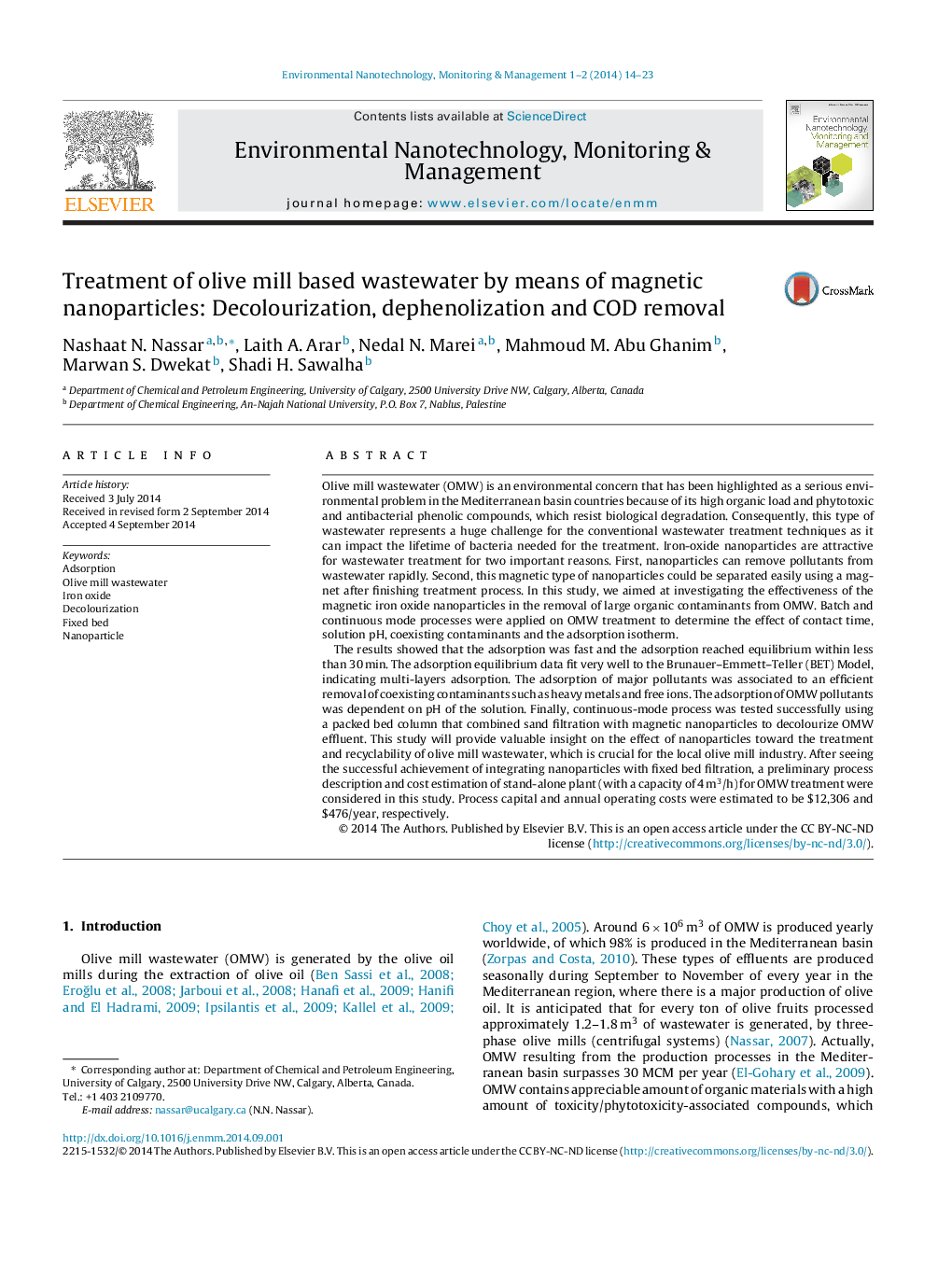| کد مقاله | کد نشریه | سال انتشار | مقاله انگلیسی | نسخه تمام متن |
|---|---|---|---|---|
| 4424229 | 1619105 | 2014 | 10 صفحه PDF | دانلود رایگان |

• γ-Fe2O3 nanoparticles could be used for phenol and olive mill wastewater treatment.
• Adsorption mechanism, kinetics and isotherms were addressed.
• Adsorption isotherms were described by the BET model.
• Integrating nanoparticle adsorption with fixed bed sand filtration was achieved successfully.
• Preliminary process description and cost estimation for stand-alone OMW treatment plant has been demonstrated.
Olive mill wastewater (OMW) is an environmental concern that has been highlighted as a serious environmental problem in the Mediterranean basin countries because of its high organic load and phytotoxic and antibacterial phenolic compounds, which resist biological degradation. Consequently, this type of wastewater represents a huge challenge for the conventional wastewater treatment techniques as it can impact the lifetime of bacteria needed for the treatment. Iron-oxide nanoparticles are attractive for wastewater treatment for two important reasons. First, nanoparticles can remove pollutants from wastewater rapidly. Second, this magnetic type of nanoparticles could be separated easily using a magnet after finishing treatment process. In this study, we aimed at investigating the effectiveness of the magnetic iron oxide nanoparticles in the removal of large organic contaminants from OMW. Batch and continuous mode processes were applied on OMW treatment to determine the effect of contact time, solution pH, coexisting contaminants and the adsorption isotherm.The results showed that the adsorption was fast and the adsorption reached equilibrium within less than 30 min. The adsorption equilibrium data fit very well to the Brunauer–Emmett–Teller (BET) Model, indicating multi-layers adsorption. The adsorption of major pollutants was associated to an efficient removal of coexisting contaminants such as heavy metals and free ions. The adsorption of OMW pollutants was dependent on pH of the solution. Finally, continuous-mode process was tested successfully using a packed bed column that combined sand filtration with magnetic nanoparticles to decolourize OMW effluent. This study will provide valuable insight on the effect of nanoparticles toward the treatment and recyclability of olive mill wastewater, which is crucial for the local olive mill industry. After seeing the successful achievement of integrating nanoparticles with fixed bed filtration, a preliminary process description and cost estimation of stand-alone plant (with a capacity of 4 m3/h) for OMW treatment were considered in this study. Process capital and annual operating costs were estimated to be $12,306 and $476/year, respectively.
Figure optionsDownload as PowerPoint slide
Journal: Environmental Nanotechnology, Monitoring & Management - Volumes 1–2, November 2014, Pages 14–23